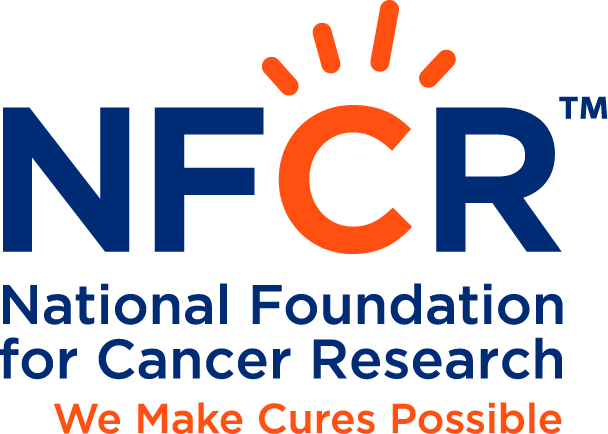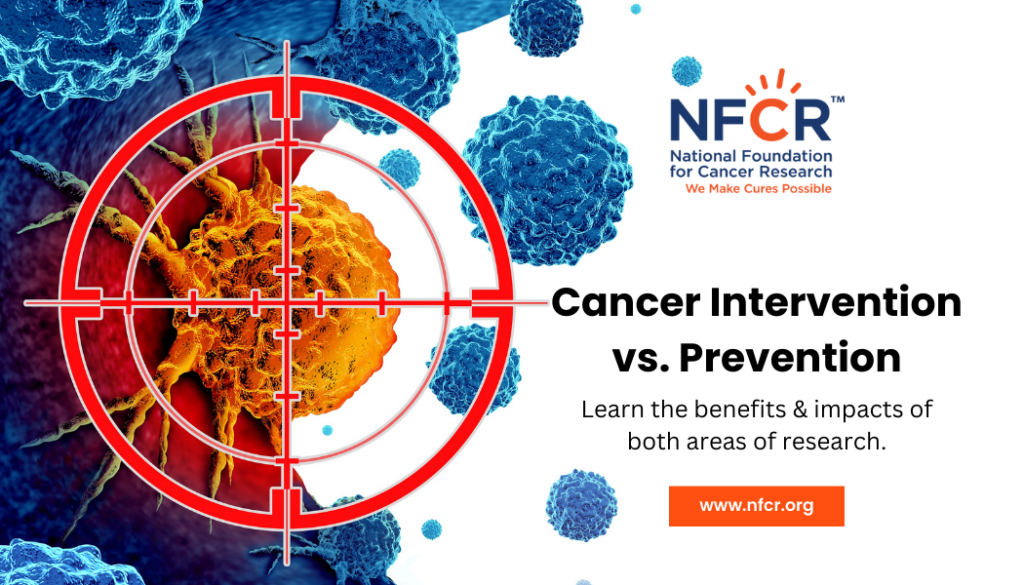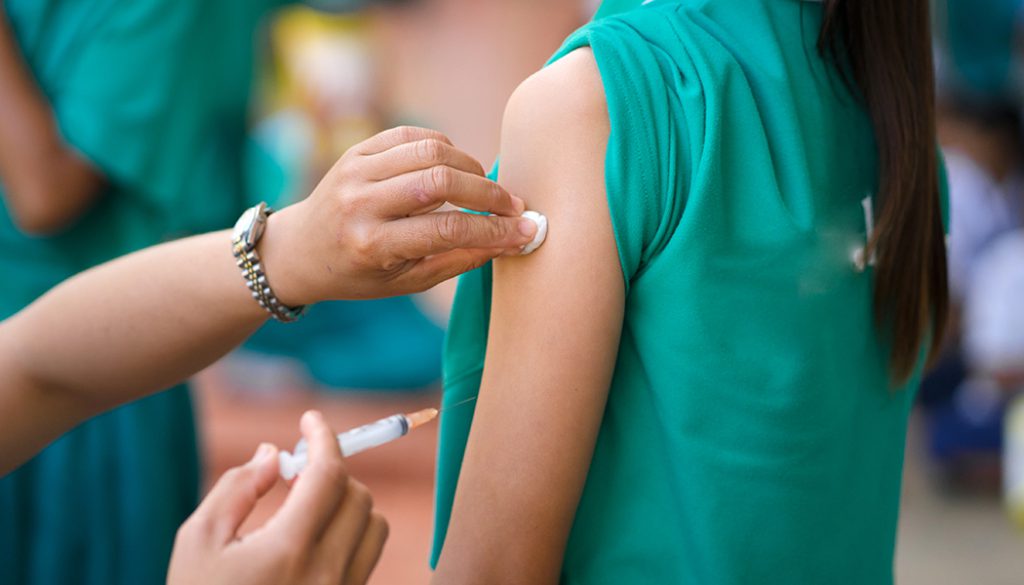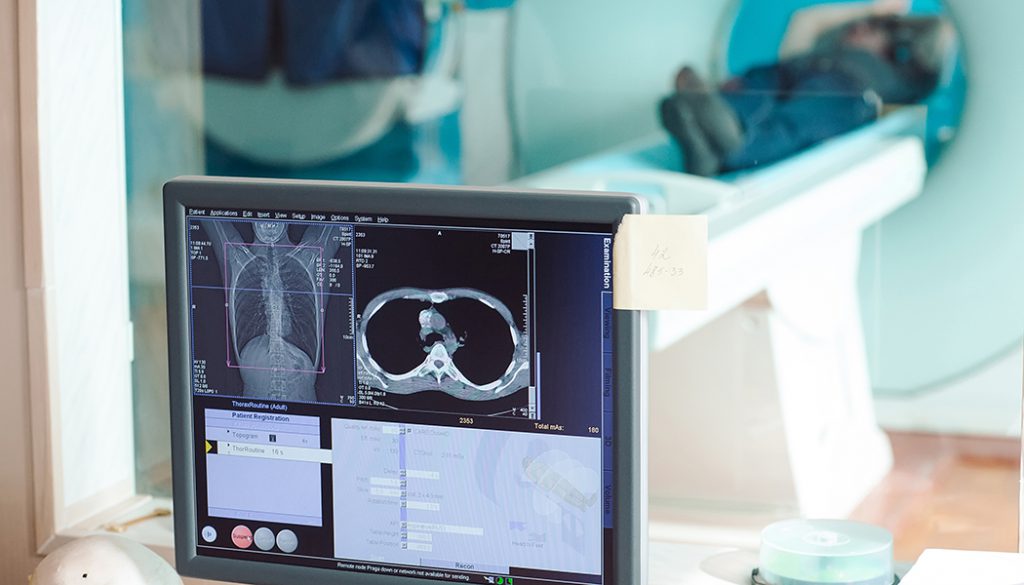Prevention & Early Detection
What is Prevention & Early Detection?
One of the best ways to reduce the number of patients dying from cancer is to prevent the disease from developing in the first place. That’s why researchers are investigating links between nutrition and cancer, as well as pre-cancerous conditions that could stop cancer from starting (known as chemoprevention).
Scientists are also working to improve early detection tools that are likely the most effective means to finding cures for many cancers.
Support Breakthroughs in Prevention & Early
Detection Research and Beyond.
Related Content
Cancer Intervention vs. Prevention: What Does it Mean?
Understand the differences between prevention and intervention and the impacts of each area of research. The National Foundation for Cancer Research (NFCR), a leader in funding cancer research for over 51 years, has been championing the prioritization of cancer intervention and prevention research. There are a few critical differences between intervening and preventing cancer. What is Cancer Intervention? Cancer intervention means finding and treating tumors at the earliest stages before extensive growth or spread. This involves: Developing and advancing screening tests for microscopic tumors through enhanced imaging and new biomarkers. NFCR helps fund the improvement of detection technologies and the identification of early-warning molecular signs. Testing precision therapies tailored to destroy the first cancerous cells by targeting specific genetic changes. NFCR provides grants for researchers on innovative early cancer treatments. Investigating if lifestyle changes and medications can halt progression when precancerous abnormalities emerge. NFCR supports research on how diet, exercise, and anti-cancer drugs might neutralize early lesions. Intervening quickly when cellular abnormalities first appear can transform outcomes by stopping cancer before proliferation and metastasis. What is Cancer Prevention? Cancer prevention refers to approaches that proactively reduce the likelihood of developing the disease. This includes: Adopting lifestyle choices to avoid risk factors like tobacco use. Everyday prevention behaviors such as eating cancer-fighting foods and meeting physical activity guidelines can help the immune system fight off cancer. Undergoing regular screening exams, especially for high-risk populations with a family cancer history, to find and remove precancerous lesions before they turn malignant. NFCR provides recommendations on optimal early detection approaches. Minimizing intake of carcinogens, optimizing protective compounds, and supporting overall body function through a nutritious, balanced diet tailored to individual risks. Funding chemoprevention research on natural compounds or drugs that may lower risk. NFCR funds research on and helps to analyze the cancer prevention potential of antioxidants, aspirin and other agents. Why Is It Critical to Focus Research on Early Intervention? Prevention is the best weapon against cancer. Worldwide research studies over many years indicate roughly 30-40% of cancer diagnoses could be prevented by modest diet and lifestyle changes. NFCR publishes information about key food groups with cancer-fighting properties. The goals are minimizing intake of carcinogens, optimizing protective compounds, and supporting overall body function through a nutritious, balanced diet tailored to individual risks. Early screening enhancements for cancer help us find the first signs of cancer before it spreads and kills. However, once cancer is detected, intervening early allows scientists and clinicians to give patients a strong chance to destroy the first cancer cells present and eliminate cancer before advanced disease develops. Boosted early screening and precision treatments tailored to the genetics of these initial cancer cells improve outcomes dramatically compared to late diagnosis. Finding and treating emerging tumors swiftly and thoroughly at the root cause will transform how we conquer humanity’s oldest diseases. NFCR believes early cancer intervention breakthroughs bring us closer to our ultimate mission – a world without cancer deaths. The Future is Early Early screening enhancements and therapies customized to root out the first signs of cancer provide hope that one day, lifelong management or even cure is possible. NFCR [...]
How to Protect Yourself from Cervical Cancer
Cervical cancer may be the fourth most common type of cancer for women worldwide, but luckily it is amongst the most preventable types of cancers. This particular type of cancer is so common because of its association with a very common sexually transmitted infection: the human papillomavirus (HPV). HPV is found in 99% of cervical cancer diagnoses. With this knowledge, and understanding that cervical cancer is a slow progressing disease, there have been many advancements in preventing HPV infections and monitoring for potentially cancerous cells. As January is National Cervical Cancer Awareness Month, it is important to be familiar with how best to protect oneself from HPV and cervical cancer. HPV Vaccine HPV is so common that an estimated 79 million Americans have the virus at any given time. Because HPV is transmitted through genital contact, condoms can be an effective measure in protecting oneself. However, the HPV vaccine has been found to be a more effective protection from the virus. It is recommended that individuals obtain the vaccination before they are sexually active. The CDC suggests that the immune response to the vaccine is strongest during the preteen years around age 11 or 12. It is also recommended for both boys and girls, though cervical cancer would only develop in women. The vaccine remains an option for unvaccinated adults. Though it is not recommended for people over the age of 26, some doctors may recommend the vaccine at an older age. Most people over the age of 26 are likely to have already been exposed to HPV, making the vaccine less effective. It is also important to understand that the vaccine only prevents against future exposure to HPV and does not treat existing viruses. Cervical Cancer Screening Options Like many diseases, identifying cervical cancer early yields the best chance to cure the disease. Symptoms of cervical cancer are likely to be written off or ignored. These symptoms include irregular bleeding or urination and pain unrelated to one’s menstrual cycle. Symptoms may not even show up early in the development of cervical cancer. For these reasons, regular screening for cervical cancer is extremely important. There are several options for cervical cancer screening. The first is the well-known Pap test. The Pap test takes cells from the cervix and tests them to determine whether or not they are cancerous. This screening method is recommended from age 21 and should be repeated every 3 years if results are normal. For people over the age of 30, they may choose to do an HPV test instead. The HPV test doesn’t test for cancer cells but instead searches for the presence of HPV. This test is recommended for women once every five years. Some women may choose to have both a Pap test and an HPV test. Doctors suggest that those having both the HPV and Pap test schedule an appointment every five years assuming results are normal. Why is cervical cancer still common? With vaccines and great screening options available, it can be surprising to learn that cervical cancer still claims approximately 270,000 lives worldwide each year. A large majority of these cases [...]
Cancer Screen Week: Who Should be Screened?
Since 2017, tens of thousands of Americans have pledged to undergo recommended cancer screening during the first week of December – appropriately named Cancer Screen Week. Cancer Screen Week is a public health initiative to increase the awareness of the benefits of early cancer prevention and detection. Over 600,000 people are expected to die from cancer in 2020 alone. Many of those lives could be saved by identifying the cancer early and getting immediate treatment. Unfortunately, few Americans are actually utilizing these life-saving screening tools. Despite the longstanding ability to detect cervical cancer, less than half of the cervical cancer diagnoses occur at the local stage. This discrepancy can drop the five-year survival rate from 92% to 17%. As evidence continues to prove the importance of screening for cancer, it is important that every person knows when to be screened and how to screen for early signs of cancer. Some families have a strong history of cancer, meaning several relatives have been diagnosed with the same type of cancer. For these individuals, doctors will likely recommend frequent screening for the specific cancer. However, those without a strong family history of cancer should still be getting screened as well. Routine screening is recommended for breast cancer, colorectal cancer, prostate cancer, cervical cancer, lung cancer, and skin cancer. The risk factors, such as age, that dictate when screening should take place vary for each available screening. To determine which cancers to screen for during Cancer Screen Week, check out the eligibility criteria for each of the cancers below: For Women… Breast Cancer It’s true – both men and women can be diagnosed with breast cancer. Because the prevalence of the disease is far less in men, only women are recommended to undergo routine screening. Screening for breast cancer can be done using self-exams and mammograms. Women can begin self-exams at any age, but mammograms are recommended for women aged 45 and older. Between the ages of 45 and 54, mammograms are recommended annually. From the age of 55, mammograms can be scheduled every other year. Mammograms help identify any abnormalities in the breast and increases the chance of finding cancer before it spreads elsewhere. Cervical Cancer Cervical cancer is one of the most preventable cancers. It is caused by a sexually acquired infection called the Human papillomavirus (HPV). Luckily, there is a, HPV vaccine available as well as simple screening options. The Pap test is a common screening method for cervical cancer, requiring women aged 21 and older to be screened every three years. The cervical screening test is beginning to replace the Pap test as common practice. This screening method suggests that women aged 25 and older be screened every five years. While this test is becoming more common than the Pap test, it is important to consult with a GP about available options. It is also important to note that even women with the HPV vaccine should be scheduling regular screening. For Men… Prostate Cancer Prostate cancer screening is available, though there is no consensus as to whether or not screening is beneficial. From the age of 50, men [...]


















